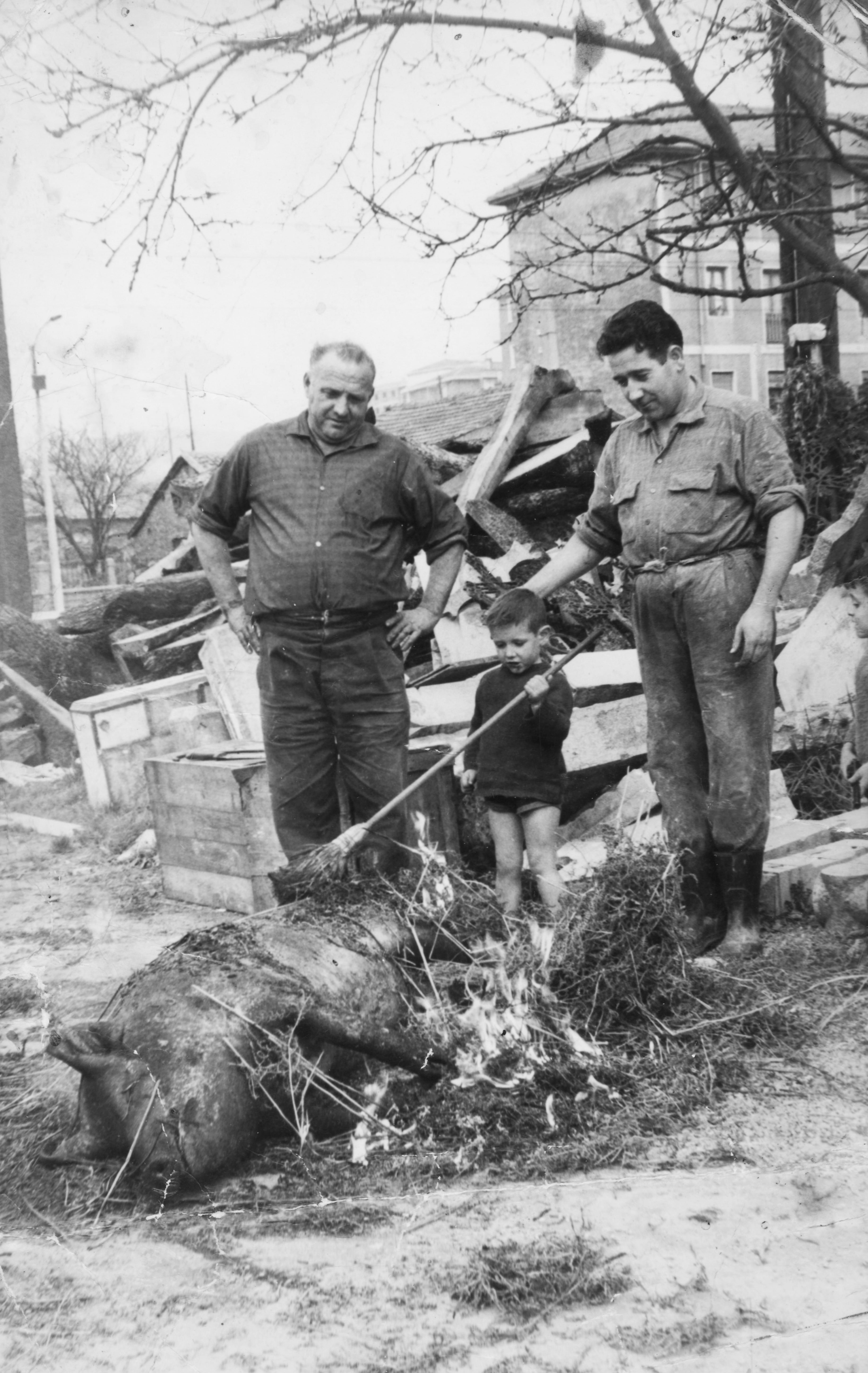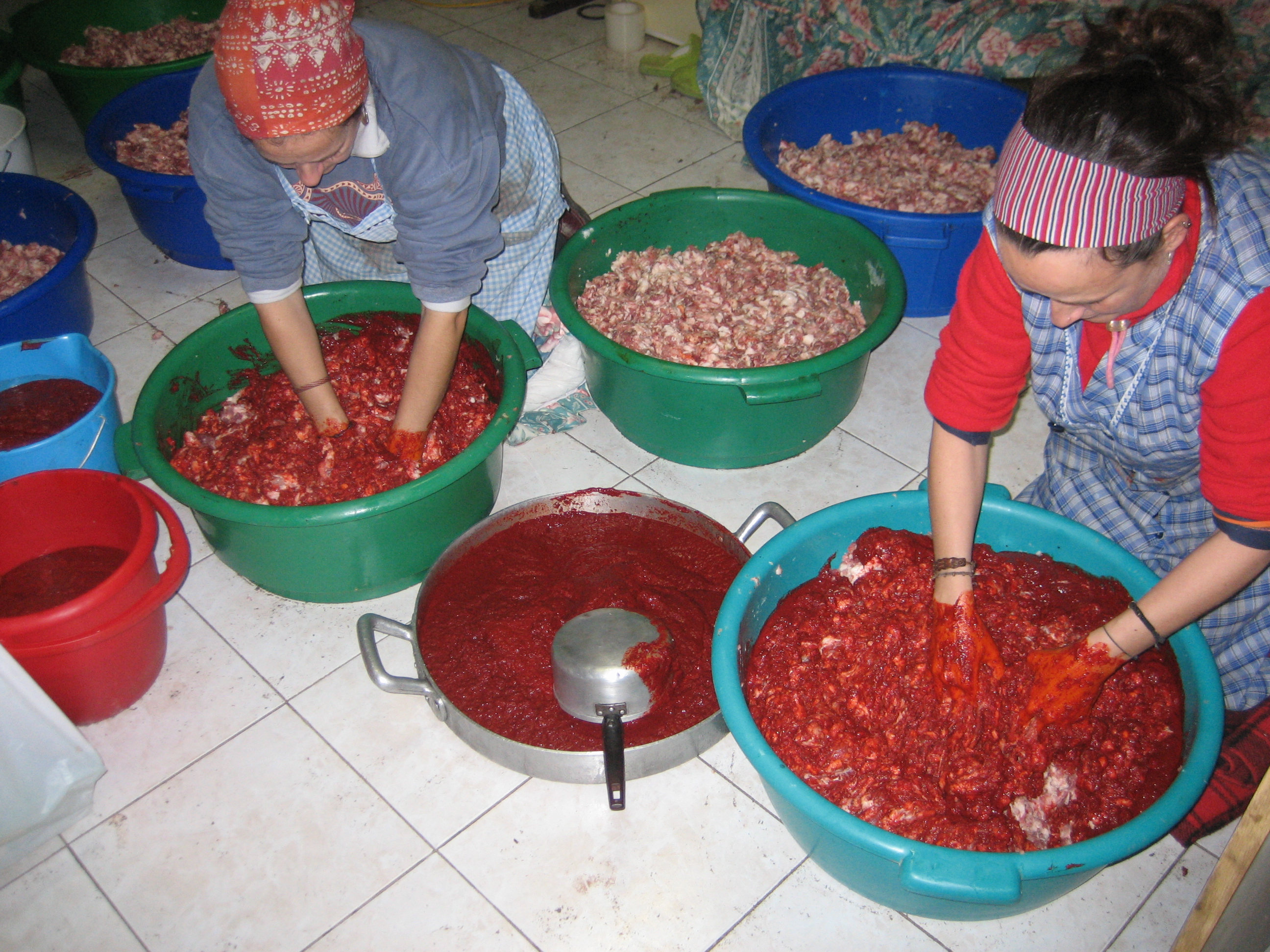Basque ethnography at a glance

Pig slaughtering in the neighbourhood of Santimami in Zamudio (Bizkaia), 1968. Courtesy of Agurtzane Aurre.
Following the World Health Organization’s last report, consumption of red meat and processed meat seems to be the issue on everyone’s lips (not to mention the controversial home slaughter of livestock regulations). Just the perfect time to call to mind the importance of domestic-animal killing in our farmhouses until not so long ago! Pig slaughter was surely the most popular of them all, but lambs and sheep, goats, rabbits and fowls… were also customarily bred and raised to be eaten. The fresh meat of cows, calves and other cattle was reserved for wedding receptions or other extraordinary family celebrations.
Slaughtering of farm animals took place at different times of the year in order to cater households for enough meat and lard supplies. Traditional meat preservation methods required cold conditions, and thus the annual slaughter of fattened pigs was conducted during autumn and winter. The butchering season started in November, at Martinmas, and would last well into February.
There are, in fact, a couple of old sayings related to pig slaughter and the Feast of St Martin: Por san Martín, sal del cortín, this one to point out that St Martin’s Day is the established day for slaughtering pigs, or A todo cerdo le llega su san Martín, which translates as His Martinmas will come as it does to everyone, that is, wrongdoers do eventually get their comeuppance.
In the olden days the lunar calendar determined the best time for putting the porker to death. In Bizkaia, the belief that the pig should be slaughtered with a descending moon (ilbehera, in Basque) was widespread and still prevails, whereas in some regions of Gipuzkoa and Nafarroa the killing was performed during the new moon (or ilberria). In certain places of Araba the moon was said to wane on Fridays, pigs could hence be sacrificed then.
Menstruating women did not participate in the pig-killing ritual under the belief that its meat would go to waste.
Protection practices against witchcraft spells have likewise been reported, such as drawing a cross on the hog’s shoulder once dead and hung, rubbing its skin with garlic, or placing garlic cloves to form a cross on the peppered ground pork for sausage making.
(Adapted from Family Diet, part of the Ethnographic Atlas of the Basque Country collection)
Akaitze Kamiruaga – Popular Cultural Heritage Department – Labayru Fundazioa
Translated by Jaione Bilbao – Language Department – Labayru Fundazioa


